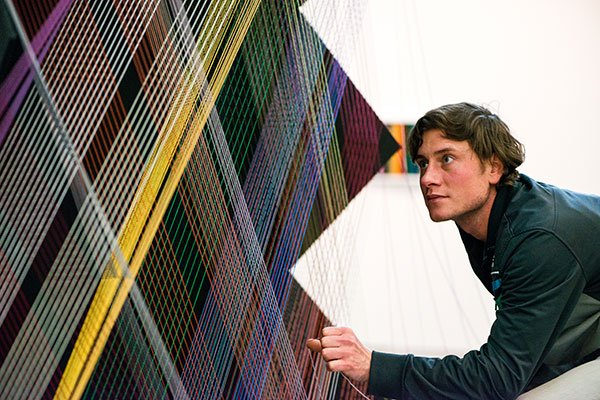Inside the Studio with Manual Knapp
Inside the Studio offers a behind-the-scenes peek into the work environments of WTP artists, as well as insight into their creative process within these resonate spaces. See Manuel Knapp’s work in WTP Vol. VII #8.
By Jennifer Nelson, WTP Feature Writer
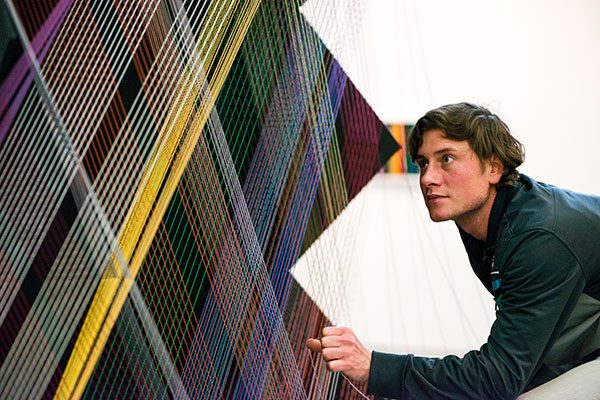
Manuel Knapp, a true master of string as fine art, relishes mornings in his third-floor studio in a half-timbered historic building in Grossglattbach, Germany. As he sips his 9 a.m. coffee, he enjoys the quietness of the attic space and witnessing the town slowly awakening—sunlight floats through glass tiles, spotlighting spider webs as he begins his day creating his string sculptures one piece at a time.
Knapp first began working with string back in 2012, during his university studies, when he spent a semester abroad in Tallinn, Estonia. He was working on a project building a minimalistic object out of matches, and used string as a line to help create a cube in the room. “We had an ambitious working atmosphere which somehow led me to the cotton strings,” he said. “I have intensively stuck to this medium ever since.”
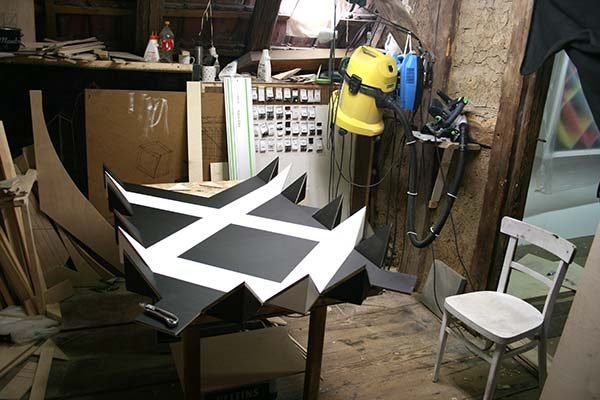
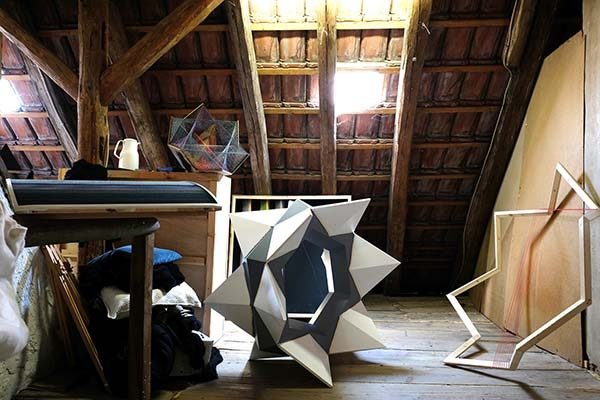
Five years ago, Knapp and his friends renovated the studio using recycled materials, so its unique personality remained. Cooling and heating systems were not added, which means difficult working conditions for Knapp in summer and winter. But it’s a close walk to Knapp’s living quarters on the building’s second floor. The building’s exact date of construction is unknown. “People tell me that back in the days it was used as a supply station for the stagecoach,” says Knapp.
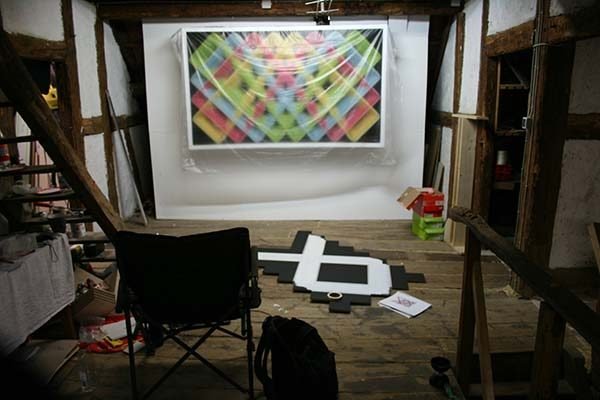
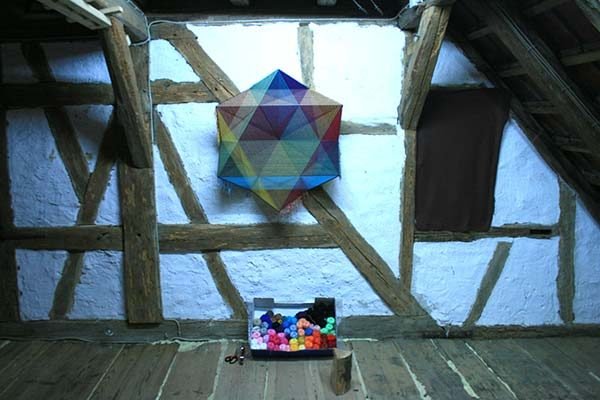
His 860-square-foot studio features four rooms connected to an open space. In the sawing room—the studio’s heart—Knapp spends most of his time preparing the wood for his sculptures. The room known as “white cube” is used for experimental installations and video productions. There’s a show area for studio visits. A wooden framed structure, low ceilings, and lot of angles from the roof lend the studio a distinct character. The space has enough room to store his materials, including wood, cotton yarn, and paint. “I only need my tools,” he says. “The spirit of improvisation and imperfection of the atelier also influences my work.”
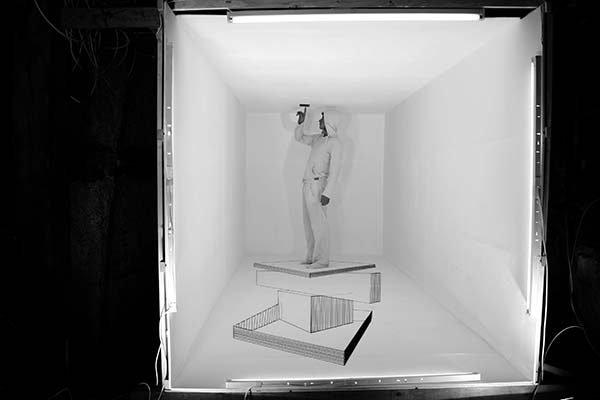
When not in his studio, he can be found working as a gardener and waiter in the Lamm, his parent’s restaurant on the building’s first floor. “As I hate monotony, this mix of diverse tasks is very important to me,” he says. “I never collaborate with other artists. I am more of a solo player.”
Once into a flow, Knapp can work up to twelve hours a day without breaks or food, avoiding distractions until the work is done. He follows a conceptual map based on a sketch, and to avoid getting lost in a trap of endless possibilities, he follows his initial idea to the end: “After a long day of being creative, I find myself in a room with a bunch of empty coffee mugs and a full ashtray, in a state of physical and mental exhaustion, but I’m content.”
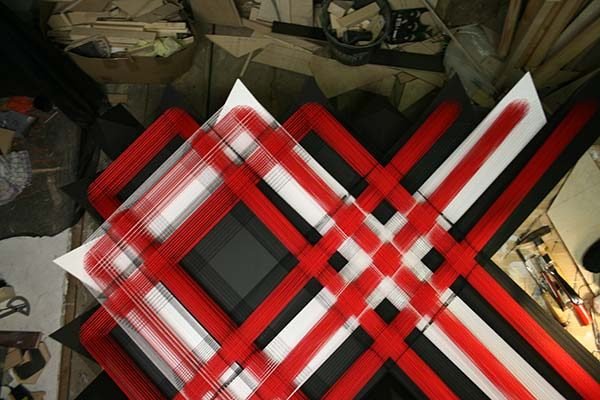
Copyright 2019 Woven Tale Press LLC. All Rights Reserved.

